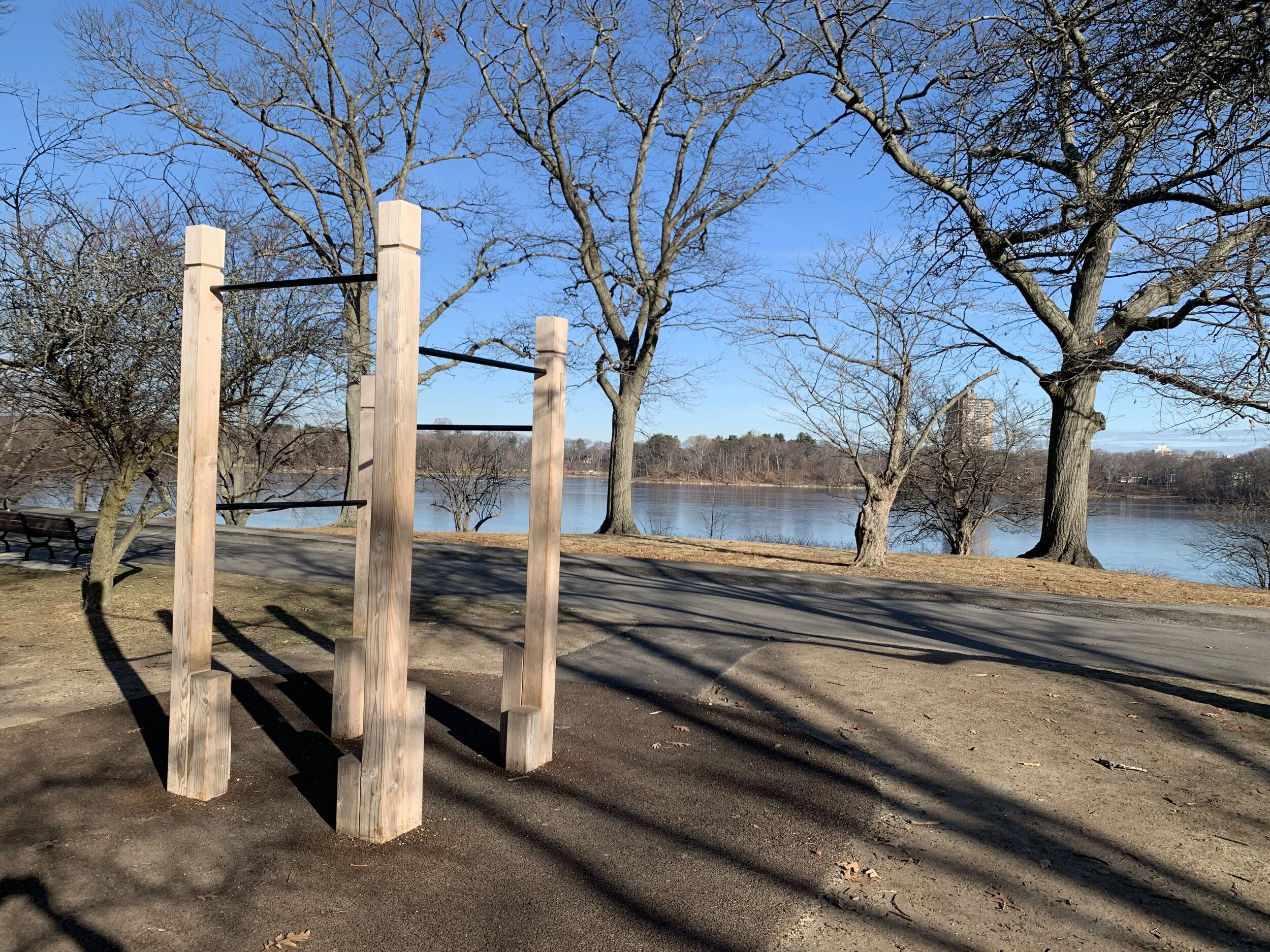Route, Energy, and exercise info
-Distance: 6.25 to 6.5 mi. (50 to 60 min.)
-Jeremy’s Energy Expenditure: Run—(800 to 1,000 Calories) Cycle—(400 to 600 Calories)
-Exercise: Run (high intensity jog with sprint interval) & Resistance (Body Weight, Resistance Bands)
+Bicep curls, Shoulder Flys, Jump Lunges, Dive Bombers/Push-ups
Jeremy Watts, imm—February 22, 2022
Just because we have relocated from New England to the Carolinas doesn’t mean the motivation and dedication to physical fitness and health stops for ‘Run Boston.’ We will adjust to a new environment and show resilience, scouting routes and executing a clear game plan! Today’s adventure brings us to Wrightsville Beach, North Carolina. Having spent much time here during military service, I am familiar with the area and have actually run what is known as “The Loop” on a few occasions. Known for its accessibility, and runner/cycle friendly roads and pathways, this route has a little bit of everything. Some features include long straight stretches along beach property, bridges and brief elevation changes, and inlet crossings with refreshing beach breezes that may provide extra resistance and added difficulty to any workout depending on your direction. The best part is that the beach and water are second to none so you can peel off the sweaty clothes and cool down in the water after you put that work in! So gear up and get moving!





Waynick Blvd. Banks Channel Southbound
Alright, so I recently purchased a bike that I’ve spent the last couple of weeks slowly getting used to. I haven’t consistently ridden one in many years and I thought that before I just pick up a bike and ride it into traffic while throwing up hand turn signals with a flashing helmet on (which I have), I should probably get comfortable by practicing and gaining some confidence slowly. I want to expand my fitness horizons and feel that a bike would not only help me do that, but it would also reduce compressive forces on my feet, knees, and hips. Over the years I have definitely run and walked long distances and currently I weigh approx. 195 lbs. The name of the game is beast mode, but it’s also longevity. If I am to go all in on running again I want to re-up on a solid low carb. diet with consistent intermittent fasting and rest to reduce my weight to 173 lbs. I have weight loss and nutrition goals, and the confidence to do it, so in the meantime I have been experimenting with a combination of riding and running coupled with walking for active recovery. I have a playground and tennis court in my neighborhood so I use the bars for pull-ups, the tennis court for fight circuit and resistance band work, and the net for jump explosions over the net to target fast-twitch muscle. I can already feel an improvement in endurance in my legs as my rides grow longer, so it must be working, right?
I drive into Wrightsville on Highway 74 and cross the first bridge, finding an access road before Harbor Way Gardens, where the loop starts. The roads are runner and bike-friendly, with wide shoulders, sidewalks, and bike lanes which are present in certain stretches of the route. The route is simple and straight as you cross the second bridge to get onto the main beach land. My goal was to travel to the southernmost tip of the island first, extending the loop and then reversing direction on the same route. At certain stretches I would pick a landmark ahead and sprint to it on the bike. I did this approx. 8 times and peddled at a lower gear in between for some interval training. The loop takes you through the main restaurant, commerce, and social scene area where you will surely share it with other cyclists and runners. It’s always nice seeing other people putting in work and it makes me go even harder—I can’t be outdone, people!
The loop leads you back towards Harbor Way where you cross the northernmost bridge and a beautiful inlet scene (see pics) presents itself. Bike signs guide you along the way and the bikeway leads back to Harbor Way Gardens and the start point. As with any outdoor exercise near the beach, plan your route and always include the weather report. Even if you execute your plan at a time that isn’t busy with traffic and people, always put safety first and practice situational awareness. It takes an animal to be mindful with a solid plan and still accomplish the best workout possible to improve your fitness level. Since the bike wasn’t enough for me on this day, I would run on the Ravenel Bridge in downtown Charleston, South Carolina later that day for my first two-a-day in a long time; so stay tuned for that experience because it is coming soon to Run, Boston!
Remember, nutrition is crucial following training to facilitate proper metabolism and regulatory functions of our vital organs. Let’s take care of ourselves and learn about healthy protein sources for effective cellular growth and other vitamin/mineral replenishment to oil the machine! Visit the link (click on the pic above) to get some ideas of great food sources!
Sincerely,
imm










































